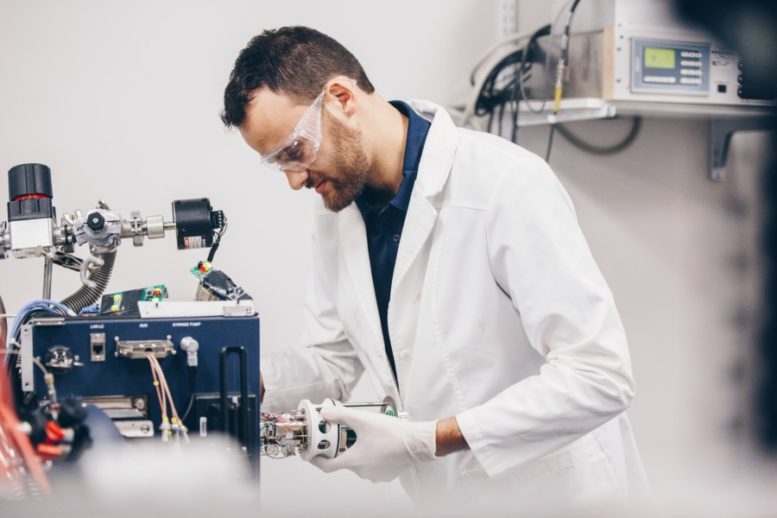Scientists are getting an entirely new perspective of what happens to oil in a spill, thanks to a tool developed by FIU researchers.
Little is known about the chemical make-up of oil and how it acts when it mixes with seawater or sunlight during a spill. But by combining techniques to create one powerful instrument, a team from FIU’s Center for Aquatic Chemistry and Environment can see how the oil behaves at the molecular level.
“The new analytical development will increase the number of molecules that can be examined six-fold, giving scientists a more detailed look into the chemical changes crude oil undergoes in a spill,” said Paolo Benigni, Ph.D. candidate in FIU’s Department of Chemistry and Biochemistry and lead author of the study. “This work opens the door to answering complex chemical questions about how molecules change in the environment.”

The new tool could change how oil spills are cleaned up in the future since officials will have more and better information. According to the researchers, officials would be able to predict toxicity of spilled oil, how far it might travel and how long it would likely stay in the environment.
“By dissecting crude oil composition down to their molecular level, we can better understand how it interacts with the environment, leading to better oil spill remediation strategies and more efficient environmental policies,” said chemist Francisco Fernandez-Lima, director of the project.
Traditional analytical technologies have mainly restricted scientists to information related to the mass of crude oils. The new tool combines techniques, allowing scientists to simultaneously examine crude oil molecules by mass, size and shape without the need of lengthy sample preparation and separation steps. One of the techniques — trapped ion mobility spectrometry (TIMS) — was developed by Fernandez-Lima in collaboration with Bruker Daltonics Inc. Fernandez-Lima has been pioneering the use of the coupled technique for a variety of environmental and biomedical applications since 2010.
By combining techniques, the researchers have developed a new analytical tool that can be used for more than just oil spills. Scientists can use it to study other contaminants in diverse water and land environments. With oil accounting for a large percentage of the world’s energy consumption, accidents with drilling, production and transportation are always a possibility. Improved remediation techniques are always the goal.
Funded by the National Institutes of Health and the National Science Foundation, the researchers’ findings were recently published in Environmental Science & Technology. Preliminary findings related to this study were published in Analytical Chemistry and Journal of Visualized Experiments.
FIU launched the Center for Aquatic Chemistry and Environment in 2016 in an effort to better detect contaminants, understand their effects on the environment, predict future contamination and design remediation strategies. It is funded by a $5 million grant from the National Science Foundation’s Centers of Research Excellence in Science and Technology program. The Center for Aquatic Chemistry and Environment is housed in FIU’s Southeast Environmental Research Center. They are part of FIU’s Institute of Water and Environment dedicated to addressing global water and environmental issues.






